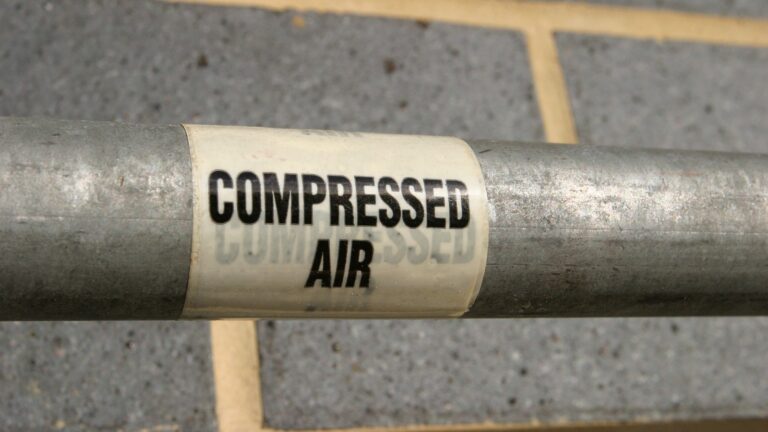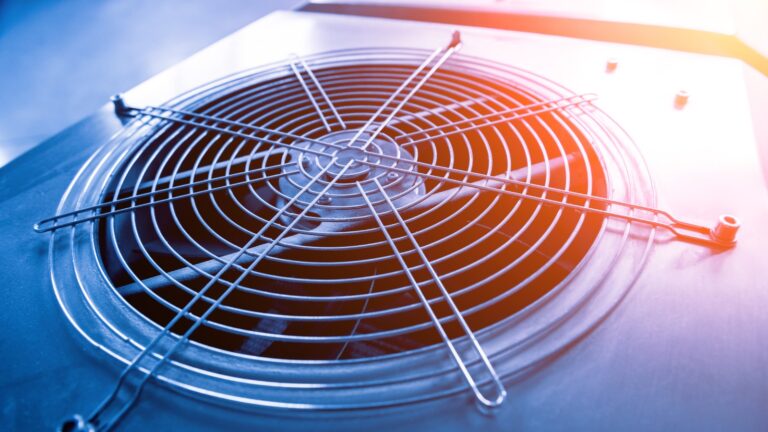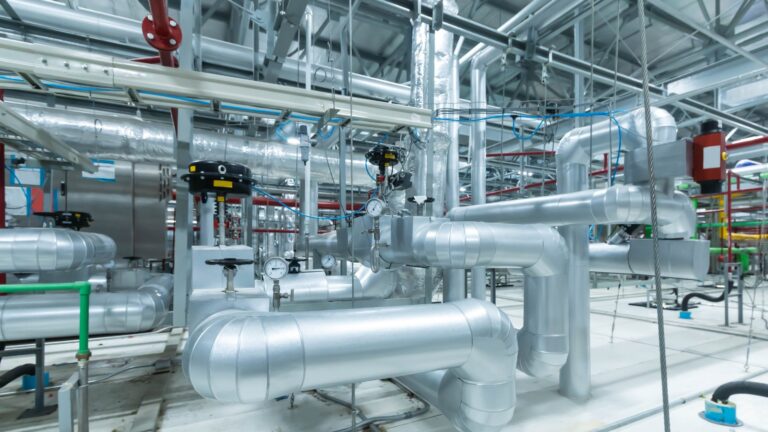It is common knowledge that industrial operations release massive loads of toxins to the air around us which can be extremely harmful both for the employees and the society. In order to provide the best solution for this ‘Air Management System’ has been introduced and through the implementation of this advanced software, manufacturing companies can detect the harmful particularities released from them as well as protect everybody from this pollution.
But how can this be done through an air management system? What are the features and functionalities that help in this environment-saving effort? Plus, what benefits can manufacturers receive through this software solution? Come, let’s talk about everything you should know about air management systems in this article.
What is an 'Air Management System'?

An industrial air management system is a comprehensive solution that oversees and controls air quality, ventilation, and emissions within manufacturing environments. It optimises indoor conditions for workers’ well-being, ensures regulatory compliance, and enhances operational efficiency. Through real-time monitoring and automation, it maintains a safe and healthy atmosphere while minimising environmental impact.
The air management system can detect various factors, including pollutants like dust and chemicals, temperature and humidity levels, ventilation effectiveness, and equipment performance. It enables real-time monitoring, ensuring optimal air quality, and suitability for employees while identifying potential issues that may impact productivity and safety in advance with its high-scaled algorithms.
The Best Features of Air Management System

Ventilation Systems
One of the most important components of manufacturing air management systems is a sophisticated ventilation system. Effective ventilation is essential for removing pollutants, smells, and excess heat from the production environment. These systems cleverly combine mechanical and natural ventilation strategies, utilising components like fans, exhaust systems, and air exchange devices to provide a continuous supply of fresh air.
By ensuring indoor air quality, worker comfort, and overall operational efficiency which are all essential for the smooth running of contemporary industrial facilities, this carefully managed interaction promotes a healthier, more productive work environment.
Condition-Based Maintenance
The Condition-based Maintenance feature is a pivotal component of air management systems. By leveraging real-time data from sensors and equipment, this feature enables predictive insights into the health and performance of ventilation and filtration systems. It monitors factors such as air quality, fan efficiency, and filter status, pinpointing potential issues before they escalate.
This proactive approach optimises maintenance schedules, minimises downtime, and extends the lifespan of components. Through predictive analytics and automated alerts, factories can strategically plan maintenance, enhance system reliability, and ensure consistent air quality, creating a more efficient and sustainable manufacturing environment.
Automated Alerting
Air quality, temperature, and system performance are just a few of the many variables that are always being observed, and this monitoring actively spots departures from optimum conditions. The system sends immediate alerts via notifications, emails, or dashboard indications in response to the discovery of abnormalities or possible problems. This real-time alert enables facility managers to respond quickly to issues, saving downtime, avoiding equipment damage, and guaranteeing continuous air quality.
This function maintains employee comfort and safety while also improving operational effectiveness. The Automated Alerting function significantly increases the overall performance of air management systems in industrial environments by delivering timely insights and enabling prompt actions.
Data-driven Air Predictive Models
These algorithms predict air quality trends, ventilation requirements, and potential effects on the environment using historical and real-time data. These models give manufacturers the ability to proactively change their air management systems by assessing factors like pollution levels, occupancy, and environmental conditions. This data-driven strategy promotes regulatory compliance, improves operational effectiveness, and optimised resource allocation.
In the long run, such models of prediction enable industries to foresee changes in air quality, reduce hazards, and provide a safer, healthier working environment. This function emphasises how pivotal advanced data analytics have become in influencing contemporary industrial methods.
Top 5 Benefits of Air Management Systems Utilised in Manufacturing

Efficiently Filtering and Purifying Air
An important benefit of industrial air management systems is their efficient filtration and air purification capabilities. By simply being there, factories generate a variety of airborne pollutants, including dust, gases, and chemicals. These difficulties are overcome by incorporating cutting-edge filtration and purification technology into advanced air management systems. These systems efficiently eliminate or significantly reduce the presence of pollutants by utilising methods like HEPA filters, activated carbon filters, and UV-C germicidal lamps.
This comprehensive approach translates to a marked enhancement in indoor air quality, promoting a healthier work environment. When they are systematically tackling pollutants through innovative techniques, industrial air management systems contribute to the well-being of workers and underscore their value in modern manufacturing operations.
Effectively Controlling Temperature and Humidity
Maintaining optimal temperatures and humidity levels is crucial for both employee health and equipment performance. These systems include several HVAC (heating, ventilation, and air conditioning) elements that work together to control the temperature and humidity levels in the factory.
This careful monitoring guarantees a welcoming and suitable working environment for employees while ensuring the efficient running of machines. Industrial air management systems greatly boost productivity, staff fulfilment, and the overall operational effectiveness of production facilities by coordinating these essential aspects.
Boosting Energy Efficiency
These technologies, which were developed with a focus on modern sustainability, are essential for reducing energy usage and factory operating costs. Sensors and monitoring tools that assess factors like interior air quality, occupancy rates, and environmental variables are an essential part of its design.
Utilising this real-time data allows for the accurate measurement of system settings and the optimisation of energy usage. Industrial air management systems enable environmental responsibility while also generating considerable cost savings by intelligently adjusting to changing circumstances, and aligning production facilities with the demands of both efficiency and sustainability.
Ability to Predict Maintenance Necessities
One great advantage of industrial air management systems is their ability to predict when machines need maintenance. This works with the help of AI (Artificial Intelligence) and sensors in the machines. The sensors keep an eye on how well the machines are working. By looking at how things have been going, AI can tell when maintenance might be needed before anything goes wrong.
This smart approach reduces unexpected downtime, keeps machines running well, and makes them last longer. By taking care of maintenance before problems happen, these systems keep factories running smoothly, help workers do their jobs, and save money. This makes sure important machines stay reliable and work well for a long time.
Advanced Risk Mitigation
With the help of AI, these systems can keep an eye on how workers behave and the environment they work in. This helps them find out if there are any dangers to safety. When they see something risky, factories can act quickly to stop accidents from happening and make the workplace safer.
This use of AI not only keeps everyone safe but also makes sure that factories follow the safety rules. By spotting risks and taking action, these systems play a big role in making sure that workers stay safe and healthy while doing their jobs.
Cerexio Air Management System

Cerexio empowered ‘Air Management System’ is a straightforward software solution that expresses robust features and functionalities towards the betterment of human beings and the environment by ensuring the air around you is purified and non-polluted. One of the best things about this system is its robust integration with other software such as IoT, AI Predictive Analytics, etc. From inspecting the pollution occurring, analysing data in real-time to alerting authorities, etc. are the benefits of this system.
Employment of New Technology for a Safer Workspace

Since you have read this whole article you may understand that the rise of technology is not the reason behind environmental pollution, on the other hand, it can be utilised as the best weapon to fight against pollution too. However, when you are opting for a suitable software solution for your company, it is always good to do some research before making a purchase. Not every software can serve you the best.
